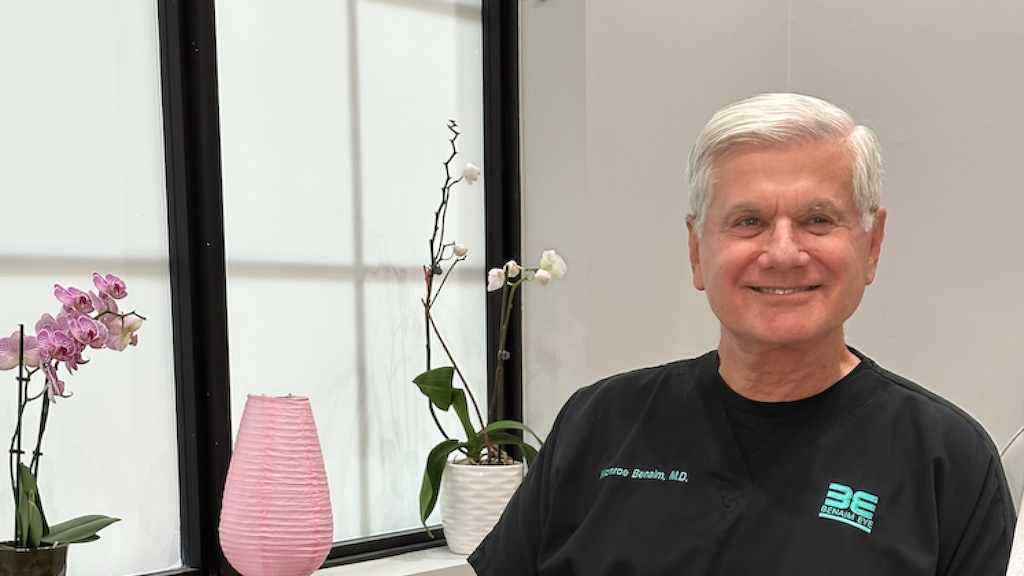Have you ever felt a fullness or stretching sensation inside your eyes? It can be uncomfortable — and even painful. But these symptoms do not always occur and very often we see high eye pressures with no symptoms at all.
Higher than normal eye pressure is known as ocular hypertension. It can also be a significant risk factor for glaucoma, which is a group of eye conditions that can lead to blindness. Patients with high intraocular pressure (IOP) are considered a glaucoma suspect.
However, an elevated IOP doesn’t always mean a patient has glaucoma. People with normal range IOPs can develop it, too. As a result, more testing has to be conducted to determine the cause.
If you have this “full” sensation in your eyes, it’s important to make an appointment with an ophthalmologist.
Here’s what you need to know before you go.
What causes an elevated IOP?
Aqueous humor is a clear fluid that flows inside the front of your eye. As your eyes continually produce this fluid, the same amount exits your eyes. This give and take helps to regulate your eye pressure.
However, there are instances when the aqueous humor stops flowing out of the eye like it should. When that occurs, pressure builds up, causing ocular hypertension.
As the pressure increases, it can cause damage to the optic nerve. This damage can lead to glaucoma and vision loss.
How do you know if your eye pressure is elevated?
A good ophthalmologist will test your eye pressure as part of a comprehensive eye exam. That’s why it’s important to get these exams done annually or more frequently if glaucoma is suspected.
To test your eye pressure, ophthalmologists use a tonometry test. During this test, the ophthalmologist puts drops in your eyes to numb them. You’ll then sit in a chair and rest your chin and forehead onto a slit lamp, which is a magnifying microscope.
What is considered high eye pressure?
There’s not just one “correct” eye pressure, according to the American Academy of Ophthalmology. However, the “normal” range is typically 10-21 millimeters of mercury (mm Hg). If your eye pressure falls in the 10-21 mm Hg range, it’s considered “normal.” Anything above that is considered higher than normal.
If you have a higher than normal IOP, but show no other signs of glaucoma, it is considered ocular hypertension.
To determine if a patient is a glaucoma suspect, the ophthalmologist will assess:
- Vision and visual field
- Pupils
- Eye pressure
- Cornea thickness
- The front and back of the eye
- The drainage channel and optic nerve
The ophthalmologist will look for defects in a patient’s field of vision and examine the optic nerve.
Are there any preventative measures I can take?
Lifestyle choices are the best way to help manage your overall eye health.
The Mayo Clinic suggests:
- Choosing food rich in vitamins and nutrients that promote eye health, such as red peppers, nuts and seeds, kale and spinach, and salmon. This won’t prevent the progression of glaucoma, but it can give your overall health a boost.
- Exercising regularly. Research has shown that exercise promotes healthy blood vessels in the eye.
- Reducing caffeine intake, which may increase eye pressure.
- Drinking fluids moderately. When you take in a quart or more of a beverage in a short period of time, it may increase your eye pressure temporarily.
- Following the directions on doctor-prescribed medicines carefully. For instance, if you overdo it on eye drops, it could cause further damage to your optic nerve.
Maintaining good eye health is all about controlling what you can control. One of the things most in your control is scheduling a routine eye exam once a year — or more frequently if you’re being monitored for glaucoma.
If your ophthalmologist determines you have elevated eye pressure, he or she will assess why and develop a plan.
To make an appointment with our ophthalmologist, Dr. Benaim, call (561) 747-7777.


